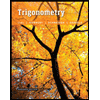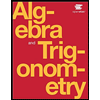In order to campare the difference between clinical diagnosis and B ultrasonic for 120 gallstones patients. Each patient with two kind of Methods for the diagnosis, the results as following: The positive rate of clinical diagnosis is 50%, The positive rate of B ultrasonic is 60%, The positive rate of two methods at the same time is 35%. How to analysis the difference between two methods?
Ultrasound scanning has been the modality of choice for the clinical diagnosis of gallstone disease for the last 25 years. It is accepted to possess a higher sensitivity than oral cholecystography or computed tomography. Ultrasound technology has undergone a period of maturation. Competition between ultrasound manufacturers and developments in computing have resulted in a significant improvement in image resolution. With such progress in technology, one would assume that the sensitivity of the diagnostic tool would also increase. Meta-analysis of studies between 1966–1992 assessing the diagnosis of biliary disease produced figures of the adjusted sensitivity of ultrasound for the diagnosis of gallstones at 0.84 and a specificity of 0.99. These figures are similar to the figures that we collected nearly 20 years later. The question, therefore, remains as to why it is that, with an increase in ultrasound resolution, there has been no corresponding improvement in sensitivity? Gallstones in the neck of the gallbladder are always difficult to identify due to the area surrounding the neck of the gallbladder being echogenic itself and as the stones cannot move. There is the possibility that stones may be lost during cholecystectomy which accounts for findings. The incidence of spillage of stones is difficult to quantify but varies from figures as low as 3.3% to 17% and non-retrieval of 0.3%. The spillage is most likely to occur during perforation of the gallbladder and is believed to occur in between 8–32% of laparoscopic cholecystectomies. However, we excluded all open specimens excluding the possibility of spillage from our study.
A factor known to limit the accuracy of ultrasonography is body habitus. Studies have suggested a linear increase in habitus limited reports as a result of increasing obesity. With the development of an increasingly obese population, there is a possibility that this may be negating the improvements in ultrasound resolution over the same time period. We did not address this in our study, but it is an area which deserves further investigation.
Step by step
Solved in 2 steps







